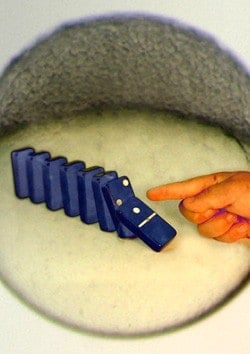The basics of conception are familiar to any high school freshman biology student, yet scientists have yet to find the initial molecular mechanisms that set off the cascade of events that form a developing embryo.
Yale University geneticists report online Sept. 22 in the journal Nature that they have identified one such trigger of life — “the finger that pushes that first domino that makes all the other ones fall and initiate the making of an embryo,” according to Antonio Giraldez, associate professor of genetics and senior author of the paper.
Scientists have known for a century that mothers provide the genetic instruction manual that drives early embryogenesis. This set of temporary maternal instructions help teach the embryo how to read its genome. However, the instructions that lead the mother to cede control of development to the incipient embryo remain undiscovered.
Giraldez and colleagues working with zebrafish measured which of those instructions are read with the highest frequency between the time of fertilization and the transfer of developmental control to the embryo — about three hours in zebrafish and 24 hours in humans.
They found that three factors — Nanog, Pou5f1 (or Oct4) and SoxB1 — had the highest level of activity and were indeed needed to push the domino of life into motion. To their surprise these factors were the same ones that reprogram adult human cells into an embryonic-like state, a discovery that won Japanese scientist Shinya Yamanaka a share of the Nobel Prize in 2012.
“The same factors that are the fountain of youth of adult cells now provide an entry point to understanding the first domino to fall in the creation of life,” Giraldez said.
Miller T. Lee and Ashley R. Bonneau of Yale were co-lead authors of the paper. Other authors are Carter M. Takacs, Ariel A. Bazzini, Kate R. DiVito, and Elizabeth S. Fleming.
The research was supported by the National Institutes of Health, the Pew Program in Biomedical Sciences, and the Yale Scholars Program.
If our reporting has informed or inspired you, please consider making a donation. Every contribution, no matter the size, empowers us to continue delivering accurate, engaging, and trustworthy science and medical news. Independent journalism requires time, effort, and resources—your support ensures we can keep uncovering the stories that matter most to you.
Join us in making knowledge accessible and impactful. Thank you for standing with us!

